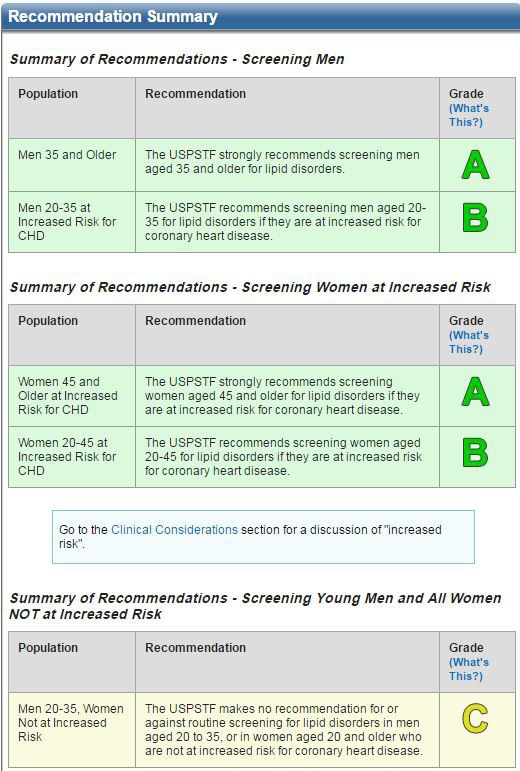 What is the USPSTF, you ask? The USPSTF is the United States Preventive Services Task Force. It is “an independent, volunteer panel of national experts in prevention and evidence-based medicine. The Task Force works to improve the health of all Americans by making evidence-based recommendations about clinical preventive services such as screenings, counseling services, and preventive medications.”
What is the USPSTF, you ask? The USPSTF is the United States Preventive Services Task Force. It is “an independent, volunteer panel of national experts in prevention and evidence-based medicine. The Task Force works to improve the health of all Americans by making evidence-based recommendations about clinical preventive services such as screenings, counseling services, and preventive medications.”
The USPSTF is reputable because of its independence from corporate donations and other interest groups. Most importantly, “Each year, the Task Force makes a report to Congress that identifies critical evidence gaps in research related to clinical preventive services and recommends priority areas that deserve further examination.”
What does this have to do with your company’s health screenings? Traditional wellness programs usually offer screenings annually for each employee. Most vendors test for cholesterol, glucose, blood pressure, BMI, and sometimes more. While it is a good idea for people to “know their numbers,” all too often these annual tests lead to false positives/negatives, resulting in costly follow-up and testing with their primary care physicians or worse, misdiagnoses of conditions. This can lead to increased costs for the employee and the employer.
Let’s look at an example to illustrate the concern. In the table below, there is a great difference in what wellness vendors recommend and what the USPSTF recommends. This summary shows what they recommend for cholesterol testing. For young men (20-35) and ALL women not at increased risk for these conditions, the USPSTF makes no recommendations to screen for these disorders, yet most wellness programs recommend screening for this each year. This certainly helps their revenue, but may not be the best use of time and money for your organization.

As an employer, what should you do? If you are unsure of your screening vendor’s methods and reasoning, contact them to check that first. If they are screening annually, ask why they do so. Tell them about the USPSTF, and ask if there’s any way they would screen every other year or every 3 years, minus new hires if it is a requirement. If they are able to, you’ll save your employees time, and could even save the organization some money in screening costs and unnecessary follow-up appointments. Another option is to switch to optional screenings for employees. If you do so, make sure to communicate to employees why the change was made. Ensure employees know the screenings are being done “for” them and not “to” them.
For more information on USPSTF recommendations on individual screenings and tests, click here.




